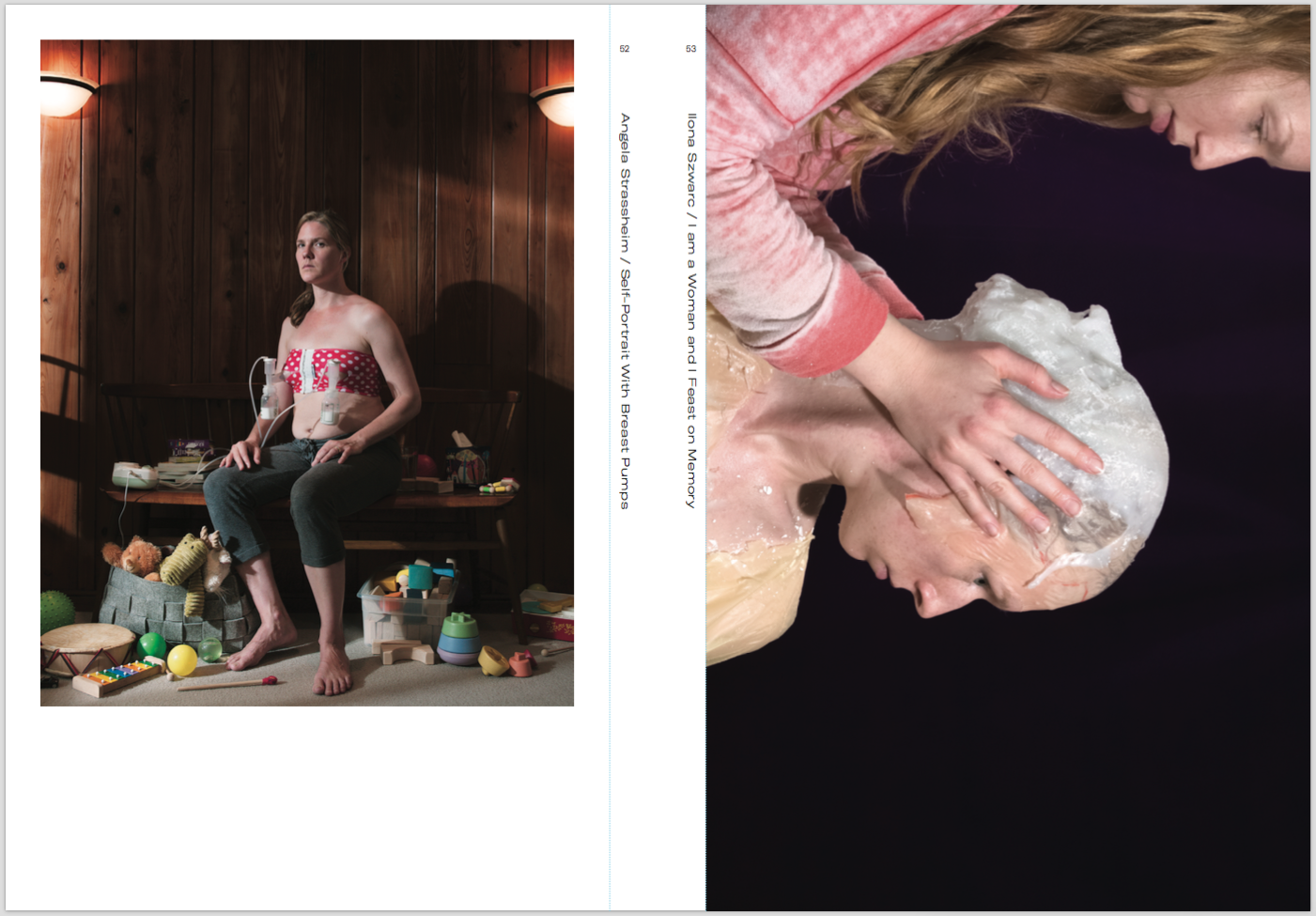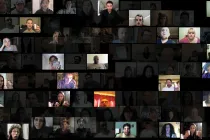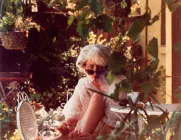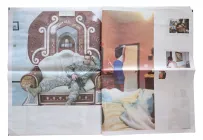
For Public, Private, Secret, Romke Hoogwaerts has published a special edition of Mossless entitled Public/Private/Portrait. Taking its cues from the central issue of the International Center of Photography’s exhibition—namely, the implications of our contemporary image world upon our personal privacy—Hoogwaerts has deployed his trademark diverse attitude to the photographic medium. Drawing together the projects of an exciting range of photographers, Public/Private/Portrait expands and ruptures the idea of photographic portraiture.
Charlotte Cotton: I can see, in a way, that Mossless operates as a discursive publication, and it shares similar strategies to the way ICP works in terms of bringing together things that were never intended to be together...it’s an inherently radical act to do that.
Romke Hoogwaerts: Yes! And you know, from a publisher’s standpoint, it’s almost bad business to keep changing the kind of genre that you’re working with [laughs]...but I feel like that’s where the most fun is had, and I’m interested in photography in general, so instead of sticking to one concept or one style, I want to try to hatch everything together and see where there’s convergence. I think that’s where we sometimes find some of the most interesting ideas.
CC: It’s an interesting idea, both as a model for a space and for a publishing format, to think about the framework that you’re creating. The way that I describe the ICP Museum is as a generous host; rather than as the definer—the solidifier—of meaning. I think there’s something about the way in which Mossless functions as a container, which is also a generous host...it doesn’t feel like it overly defines the practices it represents.
RH: I appreciate that reading. I definitely make an effort with every book that I make to have the format suit the content. So every book looks different, it feels different, it’s titled differently, and the flow is completely reimagined to suit the idea. Like the last book, Issue 3, which comprised over a hundred photographers’ work woven together into one sequence; kind of bringing their concepts together, even if they’re not shooting the same thing directly...
CC: What do you think defines the parameters of Public/Private/Portrait? Can you tell me a bit about what was important for you?
RH: Privacy and surveillance aren’t new themes in photography. So first of all, I wanted to rule out work that may have been contemplated before, at least in the same way. So I wanted it to be work that was new, or could have only been made in the last five, ten years...I wanted a really broad way of looking at it. I wanted to look at how our ideas of what is private and what is public is shifting, so that’s not so much about, you know, security cameras looking at us...it’s more about what we share of ourselves into the public. That is changing. Nobody knows where the line of public and private really is now; it’s kind of different for everybody. There’s many different ways of looking at it: the outside looking in or the inside turning out. But there’s also ideas around directly public themes, new kinds of incursions on the street, projects redefining notions of someone’s identity to a public sensibility, and so on.
CC: And I think also the possibilities of having more than one identity.
RH: Right!
CC: And identity being a very malleable thing.
RH: Yes, yes. Identity politics is such a fascinating thing, especially nowadays, it’s becoming very malleable and you could almost argue that in the future, identity politics will become almost obliterated by the shape-shifting existence of the self...how easy it will be to change the way you are, both internally and physically and on media, that is inexorably a big aspect and there are performative projects in the book to reflect that.
CC: I think projects where the behavior of images and the traffic of images are at the center are crucial to my reading of Public/Private/Portrait. They speak to the leaking boundaries, moving within a kind of quicksand dynamic, that create a “boundarylessness” between ideas of public and private. I actually think that what the exhibition Public, Private, Secret shares with Public/Private/Portrait is the crafting of a visual experience that is in part defined by what the project is not. I think what’s incredibly aligned between the two projects is this belief that there’s no more cultural room for another exhibition on surveillance and drone culture, but also, no desire from ICP’s side, and I know from your editorial side, to perpetuate this very fetishized and distant relationship to things that are actually super close to us. We’re naturalizing the behavior of images, we’re ingesting these behaviors and these changes and so...I feel that the best strategy for thinking around these big militating forces that reflect the ways we interact and represent ourselves can only be done through the negotiation of creative people. By which I mean a kind of ever-increasing definition of who creates, who makes, in this realm of maker-culture. Ultimately that fetishizing of state surveillance and corporate data mining and trolling and all those kind of behaviors is very fearful, and can leave you with a psychic paralysis about thinking around the possibilities of living in this era. I think both Mossless 4 and the exhibition speak to how we are going to literally make and visualize our human condition in light of the impact of the big militating factors that we feel. I think we also share a belief in the agency of self-representation at this moment. It connects to what you’re describing, which is this kind of movement towards very transformative ideas of sexuality and physical identity. This idea that there is this positive side of social media and web 2.0—the agency of “being seen”—really interests me because it separated privacy and self-representation from privilege, because historically people like us, the 99 percent, didn’t have any privacy or agency!
RH: Right, right!
CC: [Laughs]...and capitalism gave us the illusion of privacy. We all became VIPs, we all became potential fifteen-minute stars, etcetera. So, in one way there was that kind of perversely democratic side of late capitalism, which social media provides. I think, this opportunity to take that and run in quite subversive ways, towards the idea that now, we have to seek our right to privacy without privilege, and you get to see the world entirely differently when access and dissemination is controlled by the 99 percent.
RH: Wow. That’s a beautiful reading and I agree with that. At the same time there’s also a lot of ways that can be, and is, exploited...and a lot of the artists in this book express those ideas. So, our book obviously takes a look at it through the lens of portraiture. What are some unique works in the exhibit that you’re excited about?
CC: Well, funnily enough and I didn’t know this when we started the process, there are a lot of portraits in the project, there are many more representations of human beings than I expected!
RH: That makes sense.
CC: And I think part of that is just because I went through a very parallel journey to yours of...well...I didn’t get there as fast as you [laughs]. I’m thinking as a curator, which I think is parallel to an editor; I think purely about the viewing experience. What do I want to encourage people to feel? What thoughts do I want to trigger? What recourse does a viewer have? How is the viewer implicated in the visual experience? Although the exhibition is not made up entirely with pictures of people, I think it comes to the question [for the viewer] of “Where am I within this image world?” So you know this about me; I’m not really fond of genres and I wouldn’t even approach a subject in terms of deciding whether it is going to be about portraiture or still life or documentary—I’m not really interested in those modalities. But as it happens, there’s a lot of “humanbeingness” in the show.
What I’m excited about in the show is this dynamic of constellating things together, which actually is a book form convention, isn’t it? That’s what you do with the book sequence—the sequence becomes this linear leveler. Working with the graphic designer, Geoff Han, who's created the graphic identity of the ICP Museum, has really brought that to light. We don’t talk about the copy for label texts or labels...we’re talking about captions for the works in the exhibition. So we actually went into thinking around the language of a book, and how text operates—how a caption operates within a book—and what is the equivalent of experiencing that within an exhibition. Partly because it suits the way we’ve constellated the visual material. What the show is not is a super traditional museum show. A caricature of a proper museum show is: stand in front of this photographic print, matted and framed, read the text...somehow the piece is supposed to embody and illustrate the text. The art essentially illustrates the wall text, whether it tells you the politics of who bought it and who owns it, or what materials it’s made of, or whether it’s privileging an interpretive text. Regardless, that text becomes the anchor for the meaning of that unique object and we wanted to make sure that our captions anchor the reader in a less museological way.
I hope what happens is that the experience relies on the ways in which we’ve naturalized looking at images on our desktops, the way that we constantly see combined things and make meaning between things—the rhizomatic idea of how meaning is constructed.
RH: We definitely play with that in our book as well with the way that our sequence is constructed; things kind of speak to one another, they contrast and bounce off of each other. We try to have ample text for everything in the book to really fill up the context, and coming back to the idea of the constellation of different ideas, one of my inspirations in publishing is Lapham’s Quarterly, which pulls together disparate texts and all of kinds of media on certain themes. Say a book’s theme is “Death” or “The Metropolis”: Lewis Lapham, the publisher, will pull journal entries from historical figures and paintings and poems and all kinds of things that all speak on the theme in very different ways. People with different religious backgrounds and from geographical settings, all through history, giving you this incredibly profound reading on the issue’s theme by looking at it from every single possible direction, not just in concept but quite literally in space and time as well. I like that we were able to do something similar here. There are a few poets, writers, and painters in the book as well but obviously photography is the main subject and the main medium.
CC: It’s a diverse ownership and attitude towards photography that comes across in this form. That, in itself, is quite...well, it’s confrontational, if you imagine the hypothetical “photo-photo” reader. The way I like to describe the ideal audience of Public, Private, Secret are people who like to put something in their mouth to see what it tastes like. I think that Mossless 4 demands that level of curiosity. It’s not spelled out for you, there aren’t chapter headings, other than Look and Read. It assumes a lot about the reader which I totally validate as well, which is, our reader is really, really smart. They’re implicated in everything that’s on the discussion, that’s why they’re curious about what we’re doing.
RH: Right, absolutely. I just hope they just don’t eat the book.
This interview was originally published on publicprivatesecret.org on July 5, 2016.






